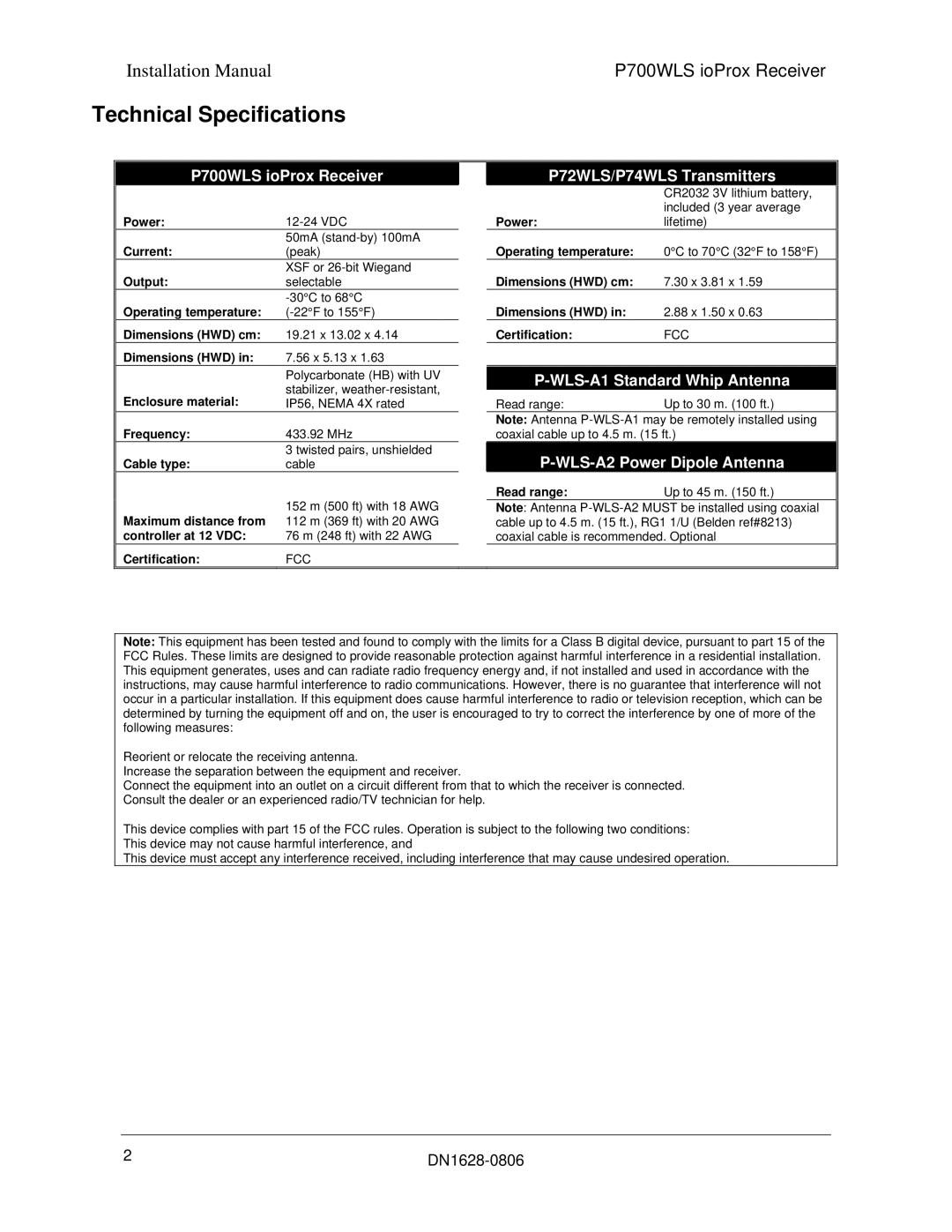P700WLS specifications
The Tyco P700WLS is an innovative wireless communication device designed for robust performance in various applications. One of the key characteristics that sets the P700WLS apart is its versatility. This device operates efficiently in demanding environments, making it ideal for industries such as transportation, utilities, and emergency services.One of the standout features of the P700WLS is its advanced connectivity options. It supports multiple frequency bands, which enables seamless communication across different networks. Users can leverage both analog and digital signaling, providing flexibility to integrate with existing systems. This feature enhances interoperability, ensuring that communication remains uninterrupted during critical operations.
The P700WLS is equipped with cutting-edge technologies that contribute to its high performance. Its wideband capability allows for increased data rates, making the device suitable for applications requiring real-time data transmission. Additionally, the device utilizes advanced modulation techniques to maximize the efficiency of communication, ensuring reliable and clear transmission even in challenging conditions.
Another important aspect of the P700WLS is its robust design. It is built to withstand harsh environmental factors such as extreme temperatures, moisture, and dust. This durability ensures consistent operation in various outdoor and industrial settings, where traditional devices might fail. The P700WLS also features low power consumption, which prolongs battery life and reduces operational costs, making it an economical choice for long-term deployment.
Security is a major priority for modern communication devices, and the P700WLS incorporates various encryption standards to protect sensitive data. This is particularly important in sectors like public safety, where secure communication can be a matter of life and death.
The user interface of the Tyco P700WLS is designed for ease of use. It includes customizable settings and intuitive controls, making it accessible to operators with varying levels of technical expertise. Furthermore, the device supports remote management capabilities, allowing for real-time monitoring and updates, enhancing operational efficiency.
In summary, the Tyco P700WLS is a powerful and versatile wireless communication solution, featuring advanced connectivity, robustness, and security. Its cutting-edge technology makes it suitable for a wide range of applications, providing reliable performance where it matters most. With its focus on user-friendly operation and long-term durability, the P700WLS stands out as an essential tool for professionals across multiple industries.

